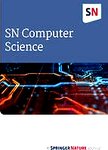版权所有:内蒙古大学图书馆 技术提供:维普资讯• 智图
内蒙古自治区呼和浩特市赛罕区大学西街235号 邮编: 010021

作者机构:Department of Computer Science and Engineering Military Institute of Science and Technology Dhaka 1216 Bangladesh Megacat Studio Pittsburgh PA United States IQVIA Dhaka Dhaka Bangladesh Departmen of Biomedical Engineering Military Institute of Science and Technology Dhaka 1216 Bangladesh
出 版 物:《SN Computer Science》 (SN COMPUT. SCI.)
年 卷 期:2024年第5卷第7期
页 面:836页
主 题:Bloodstained violence scene Convolutional neural network Image blurring algorithm Mask regional convolutional neural network ResNet (residual network)
摘 要:The violence-related news is increasing daily and people get the news from television and different social media platforms. This violent news and associated images negatively impact youth and children, leading to issues in mental health, increasing crimes, degrading socialization, and hampering everyday thinking. To reduce these negative impacts on society, researchers proposed different methods to detect these violent scenes of video frames or images from social media posts. To extend the idea and reduce the negative impacts of violence-related content, this article proposes a new Convolutional Neural Network-based model to detect, segment, and blur graphic violent scenes of an image. In this method, a hybrid approach of Mask Region-based Convolutional Neural Network and Resnet-101FPN is incorporated for detecting, segmenting, and blurring the bloodstained violent scene. A large number of blood-stained images were accumulated from diverse video streaming platforms, which allow people to watch TV shows and movies, to train the proposed model. During the training and validation of the proposed network, annotating violence and non-violence scenes were also considered for model building. The developed mask model is configured and incorporated with an image-blurring algorithm to blur the image when it finds bloodstained violent images. With 80.36% accuracy and 92.85% precision, the results indicate that this model performs better than other related existing works. The proposed work could help both the social media platforms and their users to pull the reins of spreading violent images to build a violence-free society. © The Author(s), under exclusive licence to Springer Nature Singapore Pte Ltd. 2024.